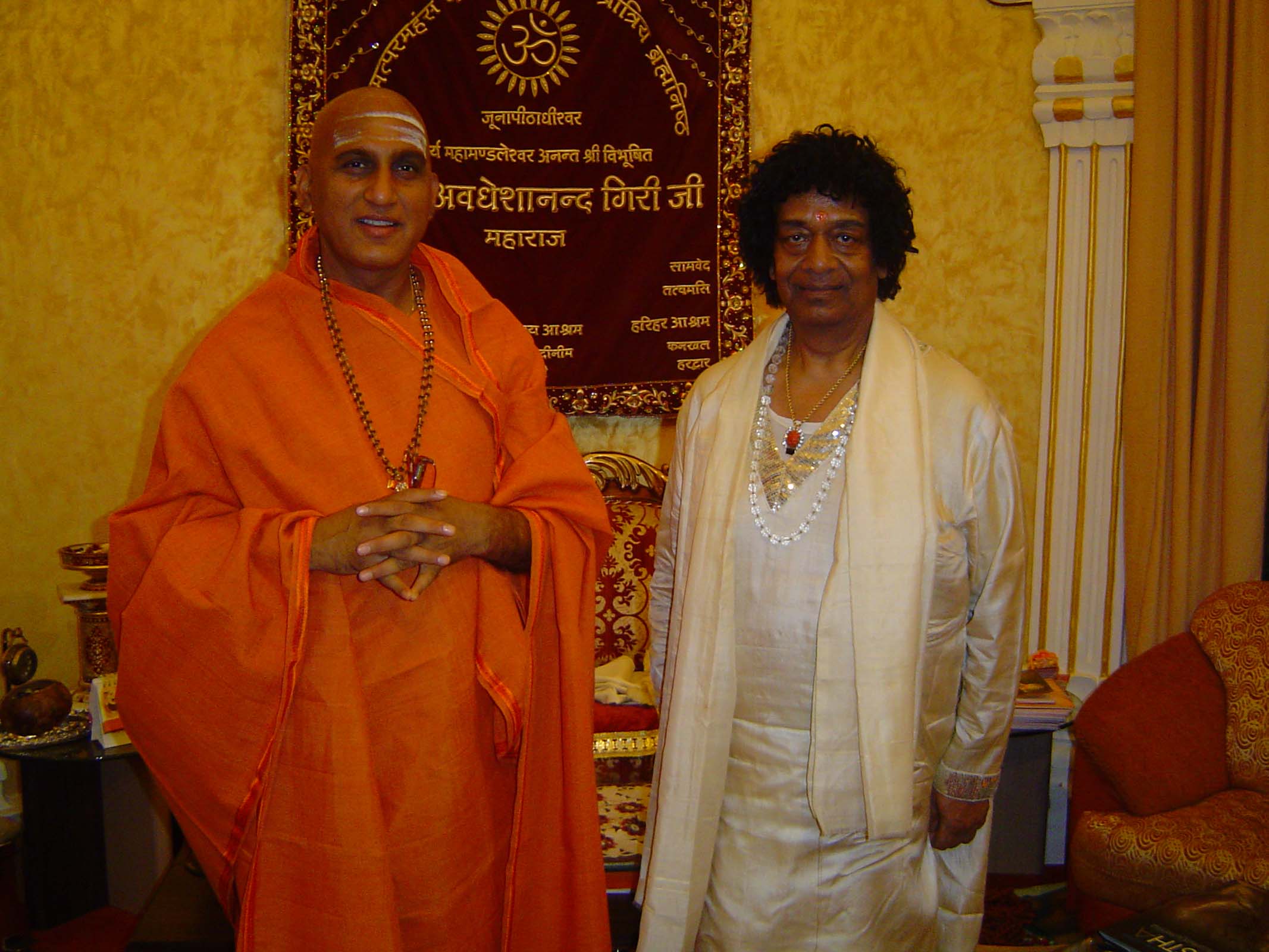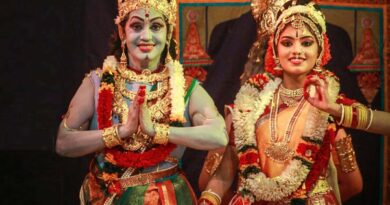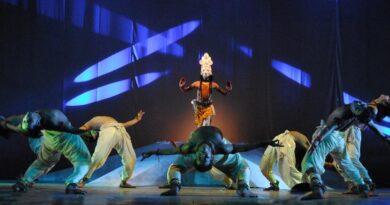Guru Jitendra Maharaj: A Maestro of Benaras Gharana
Text: Paul Nicodemus

Back in time, artistes in India moved from one place to another showcasing their art form. In one such event, dance caught his imagination when he chanced upon a Kathak performance by Guru Krishna Kumar Maharaj of Varanasi Gharana in Bareilly, Uttar Pradesh. The dancer’s emotive eyes, grace, and how the whole body moved and responded to the rhythm of percussion, the overall synergy impressed him. It made him touch the feet of the dancer after the recital. The guru noticed the boy still in his teens and enquired what he does? “I would like to learn dance from you”, pat came the reply. On that day, the youngster had a tryst with destiny and grew up to become the great Guru Jitendra Maharaj – a consummate dancer, an accomplished percussionist, an exemplary guru and propagator of temple style of Kathak dancing. While other members of the family chose regular career-oriented jobs, his heart got consumed with dance.Born on 9 September 1934 at Bareilly, Uttar Pradesh, Jitendra Maharaj hails from an intellectual Zamindari family. His father, late Om Prakash Maharaj and mother, late Ramrakhi were spiritually strong and wanted their children to do well in life. He received his training in Kathak under the tutelage of Guru Krishna Kumar Maharaj of Varanasi Gharana. He learnt the art form in a guru-shishya parampara style for many years. “I was in Madras when my guru had a heart attack. After the programme, I felt like talking to him, a sort of telepathy. Next day, I was supposed to travel to Delhi. I telephoned him and got to know that he was not well. As soon as I met him, the first thing he said was… ‘See, ours is Benaras Gharana, and I have taught you well. Now it is your turn to carry the mantle.’” Though Guru Krishna Kumar Maharaj had children, they were still young, and Jitendra became a foster son-disciple and worked towards propagating the temple style of Kathak.
After seeking blessings from Holy Devraha Baba who encouraged him to revive the lost forms of Kathak and ensure the elevation of them to a respected status, Jitendra Maharaj decided to complete this goal. He devoted his life for the development of Pre-Mughal style (Bhakti Nritya) that was practised in temples during Asht Seva. He continued the tradition and contributed discovering and collecting nuances of Kathak and its missing links. Jitendra revived its pristine glory and emerged as an essential pillar of Indian dancing. He must be credited for the development and popularity of Kathak during his career spanning more than seven decades. He decided to give religious inputs to the content and took Kathak to new heights by choreographing new dance dramas with dozens of dance productions to his credit. “At one point of time, in the medieval ages, temple style Kathak of Benaras Gharana degraded, and I did deep research and gave numerous performances to revive it,” he says. He performed in Mandirs, Jothirlings, Shakti Peethas and Kumbh to restore it pristinely.
Jitendra Maharaj has set a trend in selecting themes making dance production of mythological and non-mythological stories viz Rudra Awtar, Agnishika, Vahadehi Vanwas, Akhand Sobhgyawati, Ram Ki Shakti Puja, Yashodhra, Shiv-Shakti Mahima, Kala Aur Vasna, Ardh Nareshwar, Krishnamayee Meera-Andaal, Rabindranath Tagore’s Poetic Expression, Veerangna, Pitambara, Ganga Avtaran, Meera Madhav, Preet Kiye Dukh Hoye, Traditional Dhrupad composition of Ganesh, Shiva, Durga, Kali and Saraswati.
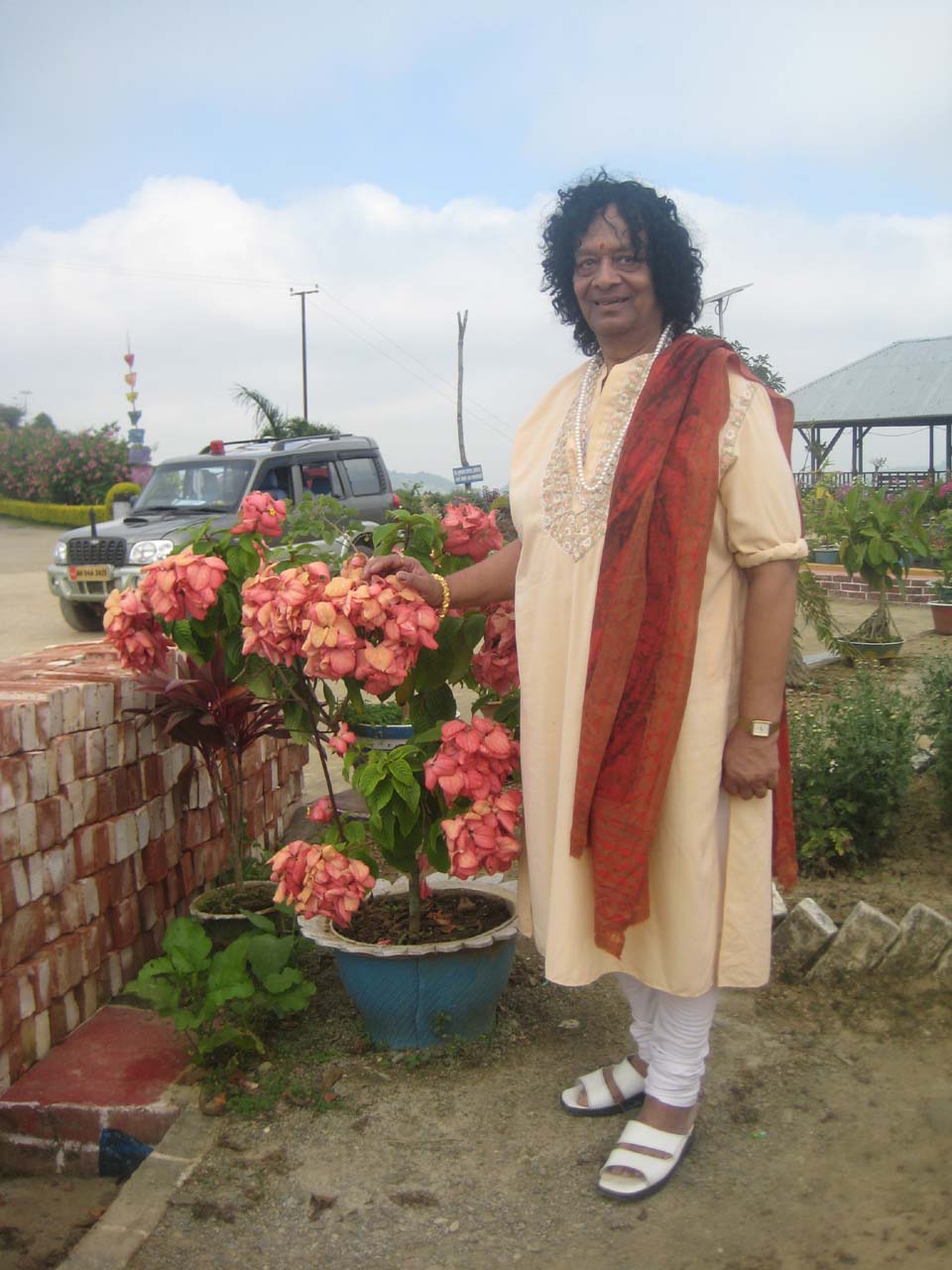
His dancing is energetic and well researched, to achieve great perfection over rhythmic nuances and intricacies in dance for 15-20 hours. Jitendra Maharaj used to dance on the wet sand. He has developed his style of dancing drawing from the treasure trove of themes, poetry, and choreography collected from Vedas and Upanishads. His concerts have the entire gamut of nritta, sometimes in different talas, interspersed with gats of lyrical beauty and compositions of dramatic moving renditions of thumris and Bhajans. In many ways he represents a lost era of complete Kathak performed all night with intensity followed by the accompaniment of masters of tabla like Samta Prasad, Latif Khan and Kishan Maharaj. “I haven’t left any State of India, I performed in every one of them,” he says.Jitendra Maharaj has distinguished himself both as a Kathak dancer and teacher – an amalgam of cultures and tantalising creativity. He started teaching the dance form at the young age of thirteen at Model Academy Bareilly, then at Natwari Kendra in Varanasi, as dance director at Manavsthali School in New Delhi. Maharaj then taught at the Vanasthali Vidyapeeth, and for two years he was in the UK teaching Indian fine art as visiting professor, he has lectured in various European Universities. He has toured and performed extensively at many festivals, conducted workshops and lecture-demonstrations for Kathak students in India and abroad. “My students loved my method of teaching dance. As adults, our understanding will be different from that of children, so I used to get down to their level and teach them,” he reveals.
He has won particular acclaim for his choreographic work incorporating mythological stories, along with Dhrupad compositions. Jitendra Maharaj has also worked on fitness, yoga and music-dance therapy; and authored books on spirituality in dance, and the relation of dance with yoga. He has assisted his guru in the choreography for the film, ‘Prem Rog’ produced by Raj Kapoor. Critics and connoisseurs showered him with praise and called him a wizard of musical excellence.
He established the Sangeetika Institute of Performing Arts for teaching Kathak Dance in Delhi in 1970. Since then, he has trained many young dancers. His institution ‘Sangeetka’ is an ideal example of Guru Shishya Parampara.
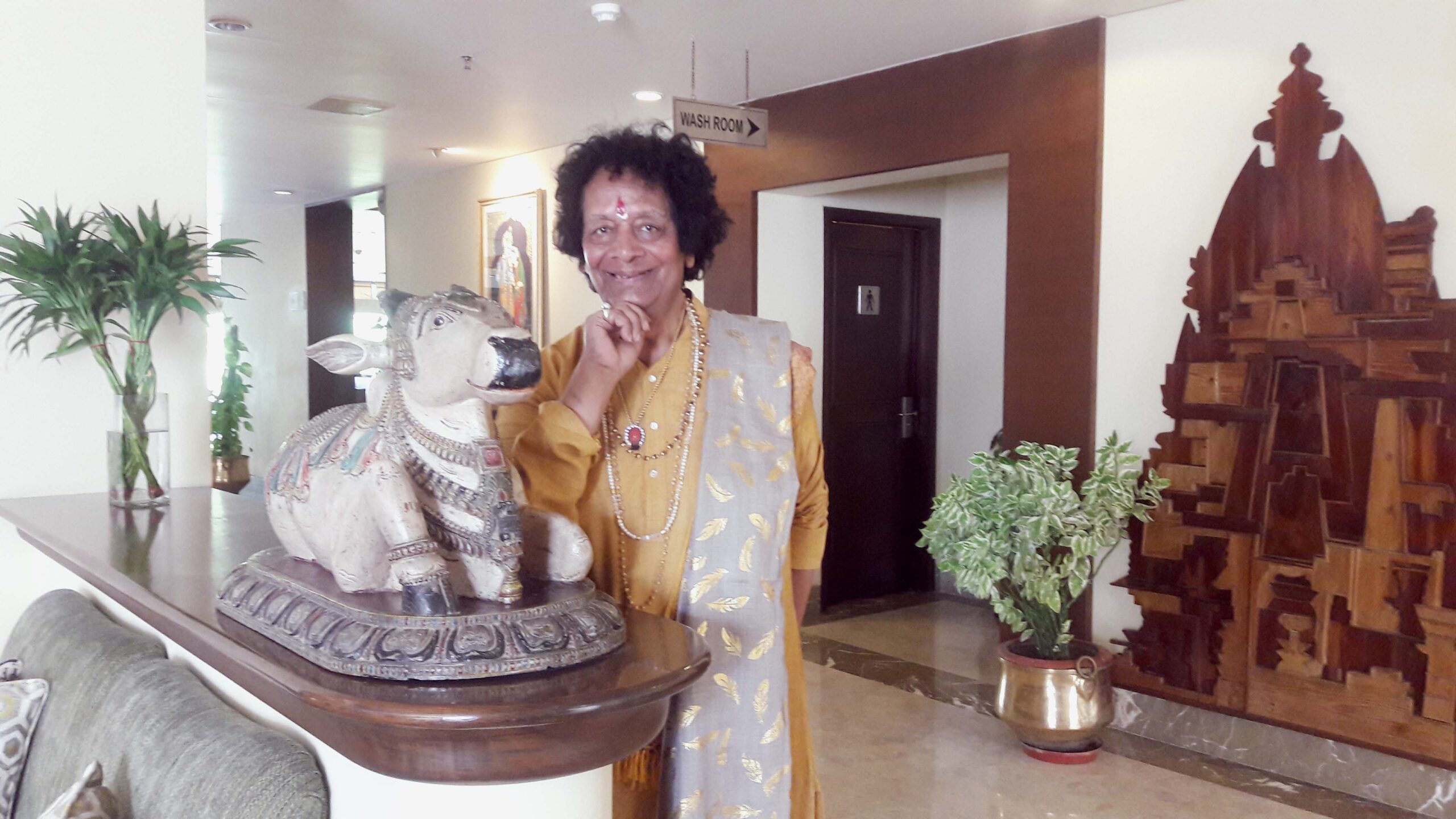

He is one of the few privileged dancers to have performed at Sankatmochan, Badri-Kedarnath, Rameshwaram, Chidambaram, Tirupati, Banke Bihari Mandir in Vrindavan (after 518 years he was the only artist to have performed in front of Krishna deity), Kanya Kumari, all the Shiva and Shakti peethas, and in all the Religious Akharas of Kumbha and Mahakumba on the recommendation – invitation of late Rajmata Scindia, and various ISKCON temples all over Europe. Along with his disciples Nalini-Kamalini duo, he set a world record by dancing at the height of 18,000 ft at Kailash Mansarovar in 2003. He also danced during world religious conference and 1000 year celebration of Tabo Monastery in Himachal Pradesh, at Potala Palace of His Holiness the Dalai Lama, Lhasa, Parayang and at the river of Bagmati to strengthen Bharat-Nepal Maitri amid the gathering of thousands of devotees, saints and Mahamanadelshwars. His Cultural voyage is still underway. He has authored a book on spiritualism in dance and the relation of dance with yoga. He has conveyed a message, art as a medium of Moksha—the salvation.
As Sanskar Bharti Sangrakshak – Pracharak, he participates in the various Shivir and Karyashalas organised at the remote northeast areas viz Arunachal Pradesh, Manipur, Nagaland, and Guwahati. And in the tribal belt of Madhya Pradesh, Chhattisgarh and Bihar. Through dance workshop, students are taught, patriotic, mythological and contemporary themes and makes them aware of indigenous values, apprised and seasoned them with socio-cultural message, thus encourage, expose and empower them through placements as trainers, and performers to work as torchbearer of traditional cultural heritage in India and provide research scholarship to the underprivileged talented students, and present them at the common plate form along with renowned artists. So far 70 students are trained and given placement at in his Dance Institute.
He made a film for BBC and ILEA Inner London Educational Authority featuring ‘Voyage of Varanasi Kathak and its Origin’. The series of lectures held since 1984, in various universities/academic institutions of the world were widely acclaimed. The response to the series in Oxford, Cambridge, Leiden Manchester University, London School of Economics, Kings Medical College, Harrow and Lylian Ballis, Helsinki (Finland) Beijing, Nanning (China), Indonesia, Bangkok, San Francisco, UCLA and Seattle were of excellent success subject were relation of Dance with Yoga, personality development, physical fitness and treatment through various Dance Mudras, hand gestures and movements have been widely acknowledged. A remarkable change in the behaviour was observed in the case of stubborn, violent and depressed students.


For the past two decades as cultural advisor to MTNL health Mela, he conducts a seminar regarding the subject – Coordination of body-mind-soul, organised by the Medical Association of Delhi and our presentation justifying it through dance is highly appreciated (it develops Concentration, will power, eyesight and improves Asthma). He trains to rehabilitate and provide help in brining the spastic and physically disabled students to the mainstream of life by music and dance therapy for their Biological and Psychological treatments through his cultural wing called “Baisakhi” ability unlimited Institute for Handicaps, at Delhi and Nagpur.
Jitendra Maharaj has a Praveen degree in Music and Dance he has authored many articles, research papers, and books and has served as a non-official member of the Indo-sub-commission for culture. A pioneer in contemporary Kathak dance, he is credited for moving away from the solo form of Kathak starting in the 1960s, by turning it into a group spectacle, and also innovations like taking away traditional stories and adding contemporary storylines into Kathak repertoire. And yet, for the purists, the classicists, there was no room for complaint in his work, he presented the Kathak dance form in a way that had never been seen before, and which at the time had some purists up in arms. However, these choreographies are now considered a classic, and many of the innovations he premiered in them have become so ingrained in Kathak performance that people are unaware that they were once just innovations.
While Guru Jitendra Maharaj has trained numerous students, it is his disciples, Nalini and Kamalini Asthana, who have been with him through thick and thin. They have dedicated their lives to take the excellent work done by their guru forward. The sister duo became an instrument spreading temple style of Kathak across the globe. “Just how, I have taken my guru’s work forward, Nalini and Kamalini have taken my work everywhere in India and abroad. Kamalini is currently the chairperson of Kathak Kendra, New Delhi and Nalini is the artistic director of Sangeetika Institute of Performing Arts. In a way, I am relieved because of the good work they have been doing. They are continuing the work that I have started,” he says.
For decades, he has performed at many concerts and festivals in India and abroad, including his performances in the commonwealth and Victoria Hall, London; and the Carnegie Hall, New York. Over the years, for his service to dance, Jitendra Maharaj has been honoured with the Uttar Pradesh Sangeet Natak Akademi Award (1996); the Indira Priyadarshini Award (1998); Nritya Shiromani Award by Sur Singar Samsad, Mumbai; Nritya Vachaspati (1962) and the Central Sangeet Natak Akademi Award (2017). Ghongroo Wizard, to him his most significant award which he received from all the saints and Shankaracharya.
“Gurus should break the shackles and teach the next generation of aspiring artistes as much as possible, without holding anything back. Make a path for them to grow and if possible, provide them with good platforms. Once this happens, they will take care of themselves and excel as professional artistes,” he concludes.
Gallery :









